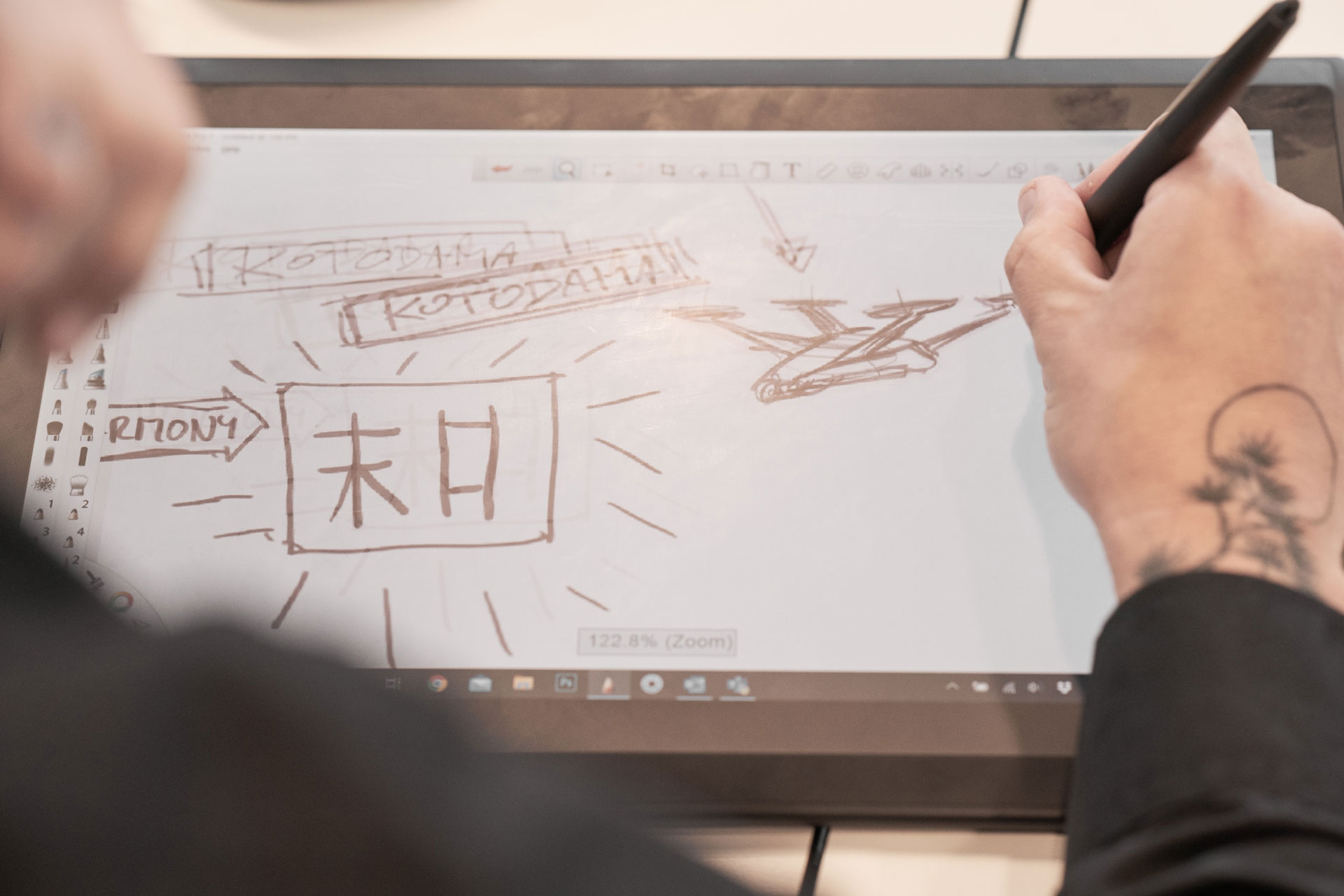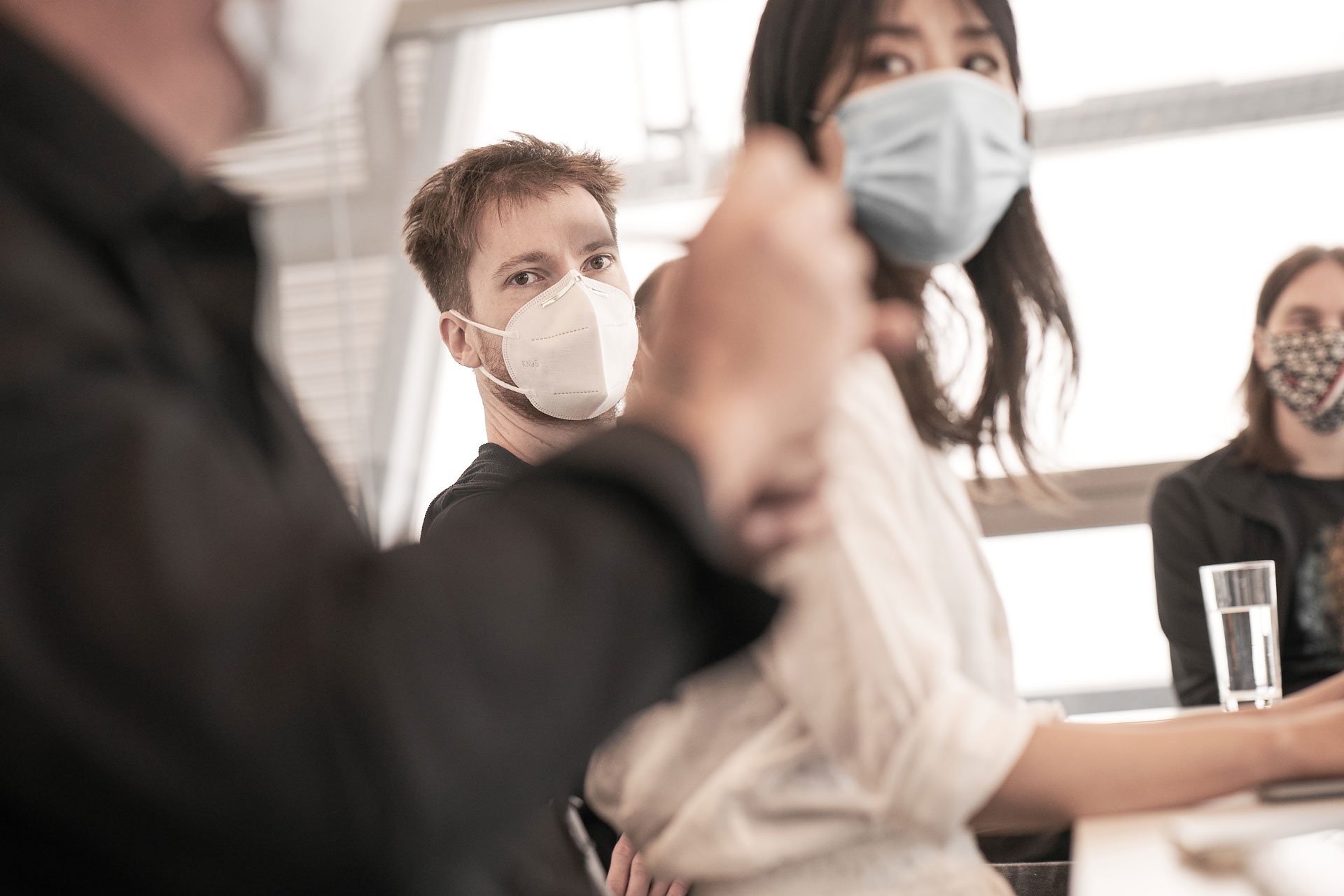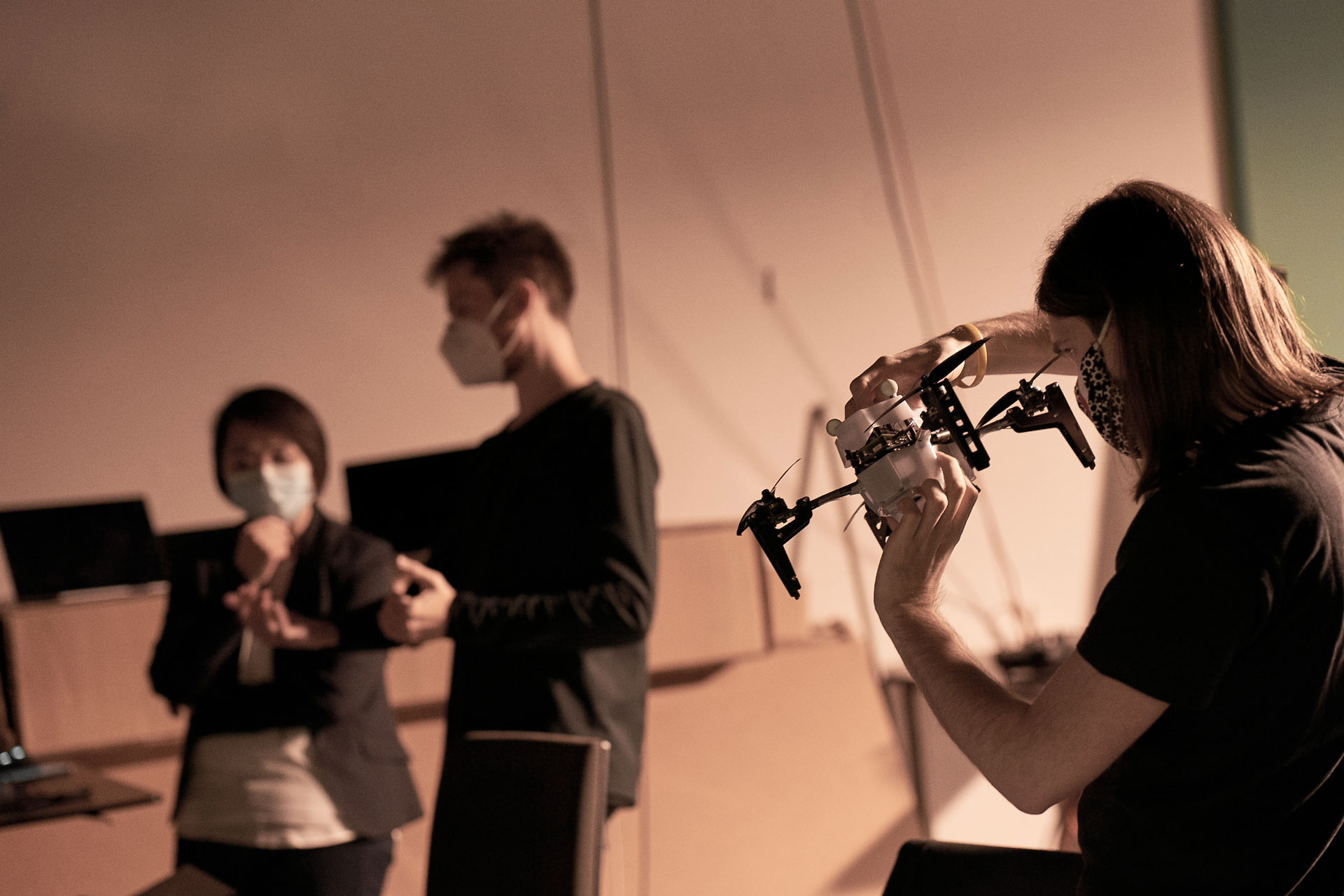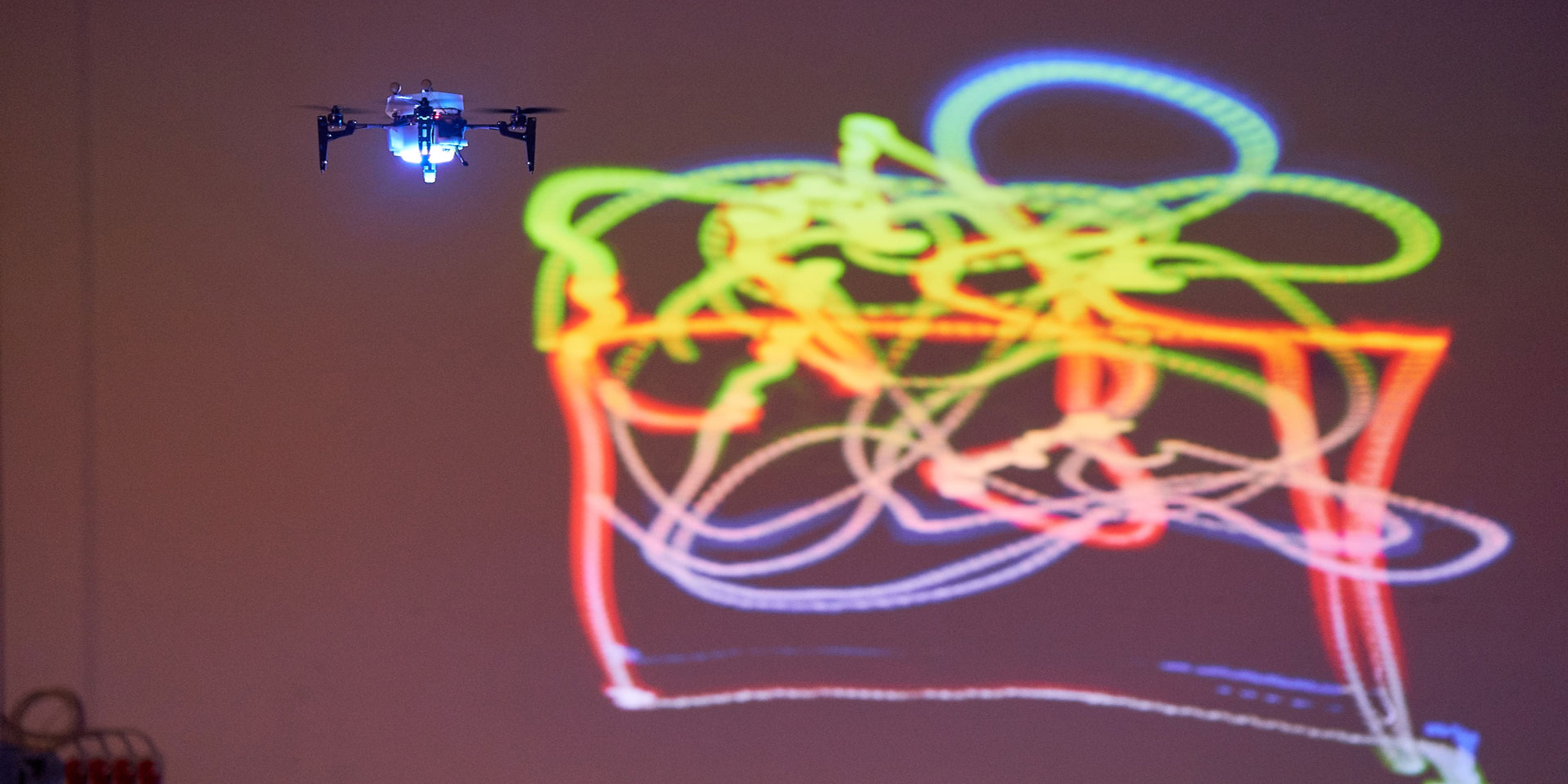“When we experience the performance of artists, as they poor their life’s emotion, passion and energy in this one special moment, we are deeply moved and inspired, in a way that we can’t explain. There is a special power in this creative moment, perhaps something similar to Kotodama, a Japanese belief that there are souls and mystical powers in the words that we express. It makes us wonder, what moves our souls, how can we capture and convey this very special moment?” – Yoko Shimizu, Researcher & Artist at Ars Electronica Futurelab
What is the future of creative expression?



“Creative Expression is not coming from technology or from an instrument. It’s really coming from inside of human nature.” – Nobutaka Ide (JP), President & CEO of Wacom Co Ltd
Space Ink Research: What if we can draw in any space with a pen?
The development of the Space Brush is the first step in the Space Ink research. The lines created with a pen on the tablet control a drone using a laser tracking system which translates these traces into spatial movement, while the LEDs attached to it leave corresponding light signs. Recorded by a camera and digitally added, the resulting light painting is projected in real time.
In a second step, the Expressive Brush expands the representation of creative expression of the artist and the drone with additional parameters, not only to capture the drone’s soul, but also to enable mutual inspiration of drone and human.
A third prototype is only just being developed: The Collaborative Brush will investigate the coordinated cooperation of several drones with the artist. It will serve as a basis for future research into the creative expression of intelligent swarms.



What is the duktus of collaboration between art, science and technology?
Nobutaka Ide (Wacom Co Ltd b, JP) talks with Horst Hörtner and Yoko Shimizu (Ars Electronica Futurelab, AT)
Why one should make a pact with art for innovative and sustainable research, but also what a radical expansion of creative expression can be expected from this inspiring and comprehensive research project in the near future, can be found in the following interview between Horst Hörtner (AT), CTO of Ars Electronica Linz GmbH & Co KG and Managing Director of the Ars Electronica Futurelab and Nobutaka Ide (JP), President & CEO of Wacom Co Ltd, moderated by Yoko Shimizu (JP/AT), Researcher & Artist at the Ars Electronica Futurelab:
Horst Hörtner: The entire frame of Future Ink is motivated by our approach of challenging each other. In our collaboration we try to create an input tool for getting new, creative outputs, rather than solving challenges and giving answers. Experimental driven and transdisciplinary research in collaborating teams is our approach, inspired by the mission of creating the future.
But, what is the driving force behind the approach of a global player like Wacom? Do they consider it necessary not only to keep an eye on the given technical possibilities and to optimize their output, but also to look for possibilities that go far beyond that and enter into collaboration with art for its innovations?
Nobutaka Ide: On one hand, as a business entity, we naturally have to think about our gains and revenues and so on. But on the other hand, we definitely believe that Wacom also has a mission.
We ask ourselves, why we are allowed to exist in this society, and our mission is to think about how we can contribute to humanity with our technologies. So, this is not about business purposes and it is not about optimizing performance. It’s really about how we can connect with the deepest inside of the human beings, the core of creativity, and how we can use our tools and experience to activate new human creativity. That is our mission.
The most important thing is that we connect ourselves to this mission, but at the same time we need partners. We need to work with communities with whom we can share a common goal, in order to make a journey together. We need a joint runner to make a joint journey – and it’s a long journey, because we don’t have a plan at the beginning and don’t know our common path yet. But I believe that Wacom should take this journey together with Ars Electronica and its strong community to explore together how we can achieve our common goals.

Yoko Shimizu: What kind of new creative expression can be expected from this inspiring collaboration between Wacom and the Ars Electronica Futurelab?
Horst Hörtner: At this moment, we are still at a very early stage of our collaboration, but with Space Ink there is already a prototype for a strategy that is pointing the way. We’re now already working on even more intelligent systems of interpreting the drone itself. The first step is to interpret the artist’s intention, and the drone itself becomes a living brush, the so-called Expressive Brush. It shall react autonomously to the movements of the hand and interpret the artistic intention in order to achieve new results.
Nobutaka Ide: And this is exactly where this unexpected moment in the collaboration comes from. Of course, it is the technology that makes everything possible. But the key question is still: Where is my soul? Where is Kotodama? Can a drone have Kotodama? And can the drone’s Kotodama convey to the artist? Of course, there are no real answers to these questions, and we are not looking for technological solutions. And yet it is these creative questions that move us ahead.
Yoko Shimizu: Why is the soul so important for you or for this research?
Horst Hörtner: It is the cooperative attempt to humanize technology. The attempt to go beyond user-optimized design, which by comparison seems almost obsolete. We want to create human-centered architectures and systems for the future of digitization. And the central question “Where is my soul?”, this idea of Kotodama, is based on the fundamental desire to identify the unique moment of creation.
In another research topic, we at the Ars Electronica Futurelab are simultaneously investigating artificial intelligence and asking ourselves the question of whether machines can create at all: Machines can achieve a very, very high performance, but still we repeatedly find that in working with the machine, with this new technology, the human aspect is the essential part of what we’re trying to achieve here. It is important for us to find the right balance, to integrate new technologies in cooperation with us humans.
Nobutaka Ide: Kotodama is really the core, the fundamental force for the human being to desire and express something. Since the beginning of the history of art and science, all human beings have been equipped with Kotodama. Kotodama is the method to activate and support creative expression. This is why Ars Electronica Futurelab and Wacom are working on the creative experiment of opening up new possibilities for the soul. How can we open new opportunities for the Kotodama? And how are these guys going out from their inside?

Additional information
Watch the entire conversation, recorded as one of the Ars Electronica Futurelab’s Creative Question Challenges (CQC). The CQC on Future Ink between Horst Hörtner (AT), CTO of Ars Electronica Linz GmbH & Co KG and Managing Director of Ars Electronica Futurelab, Nobutaka Ide (JP), President & CEO of Wacom Co Ltd, and Yoko Shimizu (JP/AT), Researcher & Artist at the Ars Electronica Futurelab is viable at the Ars Electronica Selection Channel, which additionally offered a virtual Video Journey to the Future Ink Open Lab.
Guided tours offered visitors to the Open Futurelab Exhibition 2020 the opportunity to experience the work of the researchers in the studio of the Ars Electronica Futurelab.
